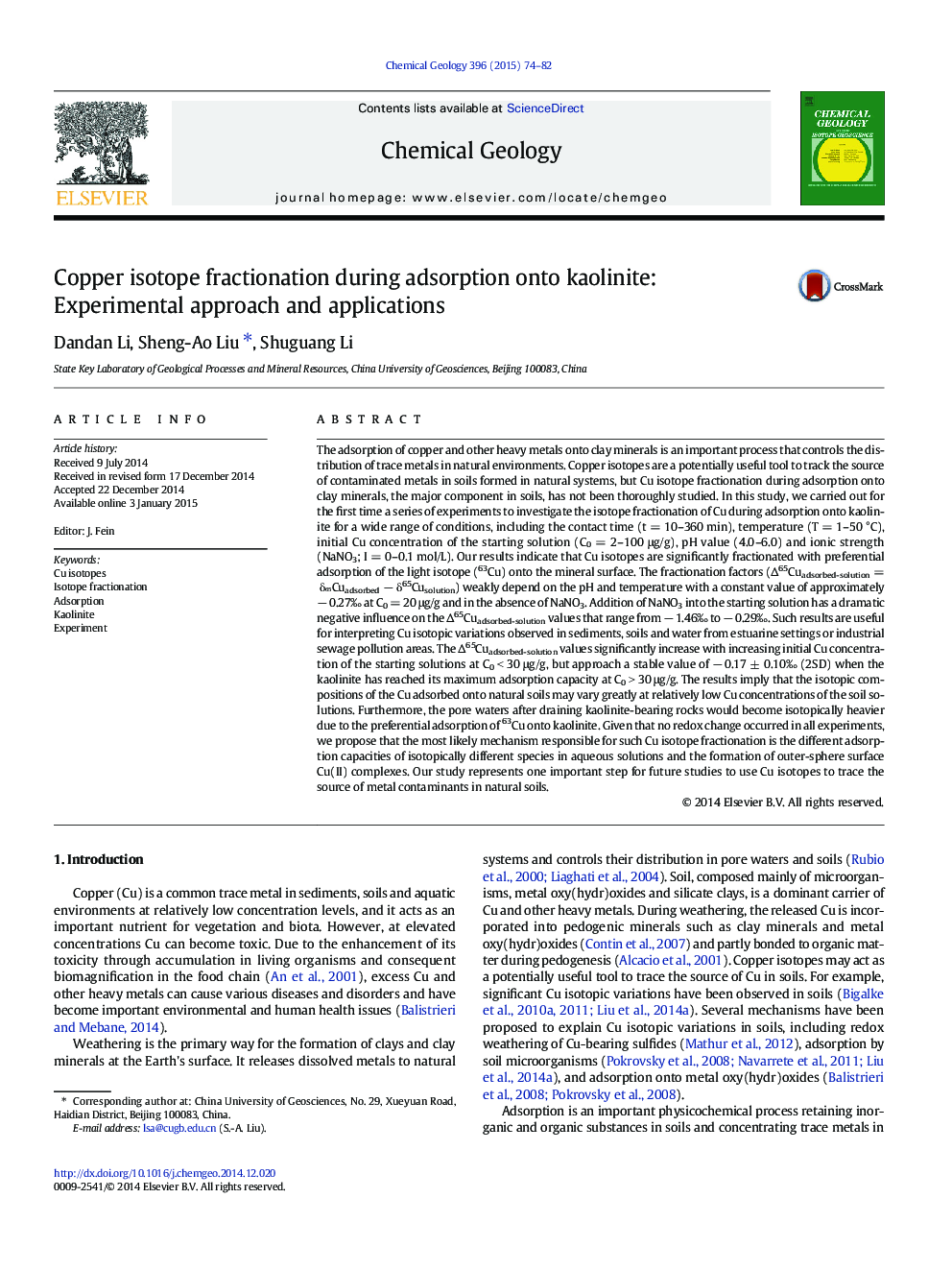| کد مقاله | کد نشریه | سال انتشار | مقاله انگلیسی | نسخه تمام متن |
|---|---|---|---|---|
| 6436503 | 1637577 | 2015 | 9 صفحه PDF | دانلود رایگان |
- Copper isotope fractionation during adsorption onto kaolinite is investigated.
- The light isotope (63Cu) is always preferentially adsorbed.
- Isotope fractionation is weakly dependent on T and pH, but strongly related with Cu concentration of the starting solution.
- The results have important implications for explaining Cu isotope variations in nature soils and porewaters.
The adsorption of copper and other heavy metals onto clay minerals is an important process that controls the distribution of trace metals in natural environments. Copper isotopes are a potentially useful tool to track the source of contaminated metals in soils formed in natural systems, but Cu isotope fractionation during adsorption onto clay minerals, the major component in soils, has not been thoroughly studied. In this study, we carried out for the first time a series of experiments to investigate the isotope fractionation of Cu during adsorption onto kaolinite for a wide range of conditions, including the contact time (t = 10-360 min), temperature (T = 1-50 °C), initial Cu concentration of the starting solution (C0 = 2-100 μg/g), pH value (4.0-6.0) and ionic strength (NaNO3; I = 0-0.1 mol/L). Our results indicate that Cu isotopes are significantly fractionated with preferential adsorption of the light isotope (63Cu) onto the mineral surface. The fractionation factors (Î65Cuadsorbed-solution = δ65Cuadsorbed â δ65Cusolution) weakly depend on the pH and temperature with a constant value of approximately â 0.27â° at C0 = 20 μg/g and in the absence of NaNO3. Addition of NaNO3 into the starting solution has a dramatic negative influence on the Î65Cuadsorbed-solution values that range from â 1.46â° to â 0.29â°. Such results are useful for interpreting Cu isotopic variations observed in sediments, soils and water from estuarine settings or industrial sewage pollution areas. The Î65Cuadsorbed-solution values significantly increase with increasing initial Cu concentration of the starting solutions at C0 < 30 μg/g, but approach a stable value of â 0.17 ± 0.10â° (2SD) when the kaolinite has reached its maximum adsorption capacity at C0 > 30 μg/g. The results imply that the isotopic compositions of the Cu adsorbed onto natural soils may vary greatly at relatively low Cu concentrations of the soil solutions. Furthermore, the pore waters after draining kaolinite-bearing rocks would become isotopically heavier due to the preferential adsorption of 63Cu onto kaolinite. Given that no redox change occurred in all experiments, we propose that the most likely mechanism responsible for such Cu isotope fractionation is the different adsorption capacities of isotopically different species in aqueous solutions and the formation of outer-sphere surface Cu(II) complexes. Our study represents one important step for future studies to use Cu isotopes to trace the source of metal contaminants in natural soils.
Journal: Chemical Geology - Volume 396, 9 March 2015, Pages 74-82
